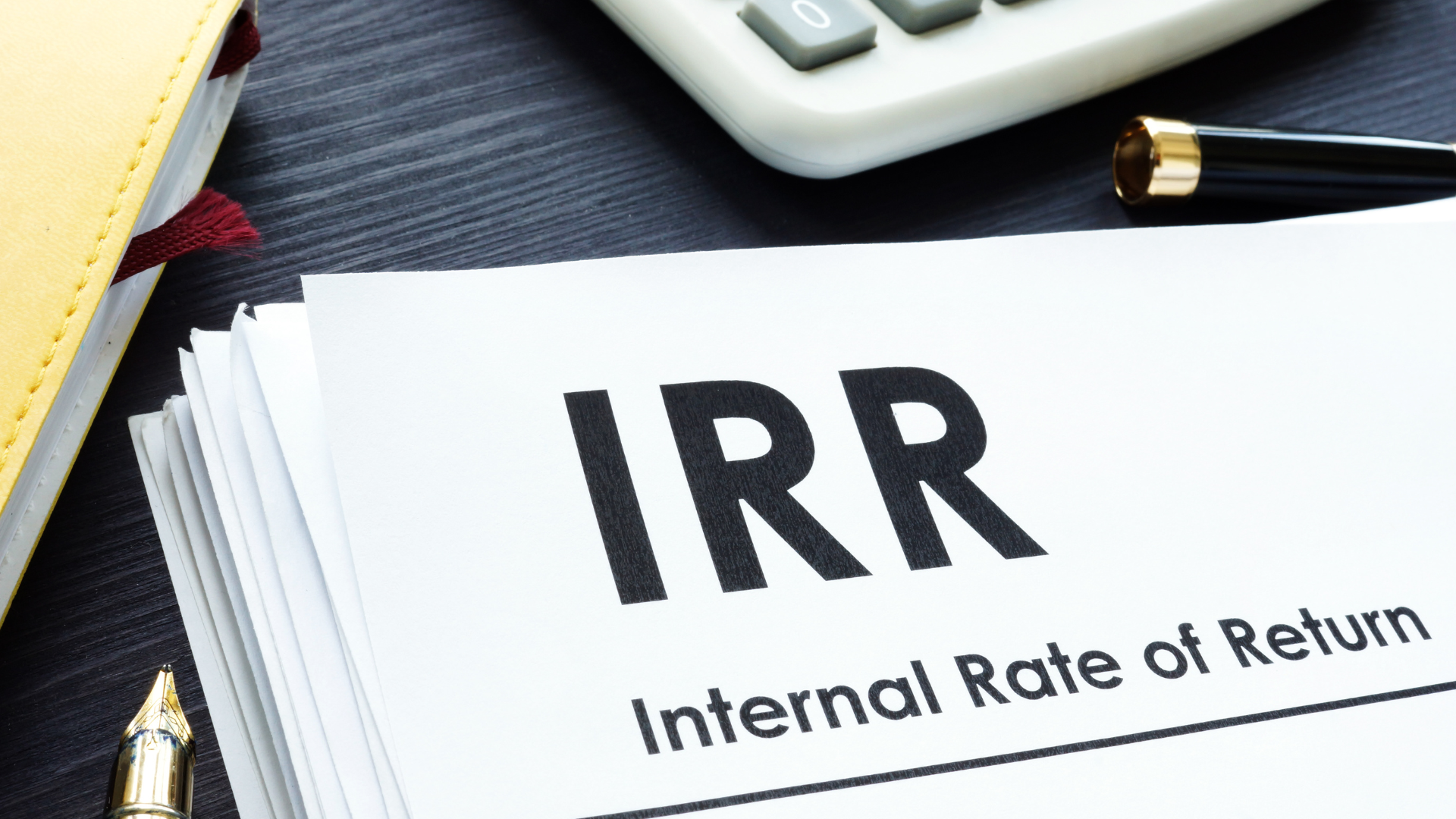Commercial Real Estate 101: Essential Vocabulary for Investors
|
FEBRUARY 14, 2024
|
Introduction:
For those seeking to establish a stable financial foundation and passive revenue streams, experts commonly emphasize the importance of a long-term asset allocation strategy. While there are various investment avenues available to bolster wealth or enhance financial stability, placing all available funds into the volatile stock market or cryptocurrency poses significant risks. These markets frequently experience downturns that can adversely affect invested capital.
However, not all investments exhibit such volatility. Certain types of investments, such as commercial real estate, offer stability to a portfolio while presenting substantial upside potential when executed correctly. Long-term returns from commercial real estate investments often surpass those of other investment types.
As of 2021, the average 25-year returns on commercial investments stood at approximately 10.3% annually, exceeding the 9.6% average annual return of the S&P 500 index. Low-volatility asset classes like commercial real estate provide investments less prone to rapid changes, particularly negative ones.
The realm of commercial real estate presents a myriad of opportunities, facilitating portfolio diversification. Options include office properties, multifamily rental properties, retail spaces, mixed-use buildings, and industrial properties. Moreover, there exist various methods to engage in commercial real estate investing, beyond purchasing and managing a commercial building outright. Investors can participate by funding other investors’ projects or investing in crowdfunding opportunities, which helps spread risk and offers returns when the property performs as expected.
Before delving into commercial real estate investing, understanding key terms associated with it is crucial. To aid in this endeavor, EquityMultiple has compiled a list of 20 essential terms that both novice and seasoned commercial real estate investors should familiarize themselves with:
1. Accrued Interest
Accrued interest in real estate refers to the interest earned on a loan during a specific period—whether it’s a mortgage loan or another type of financing—that hasn’t been paid to the lender yet. Depending on the position within the financing agreement, accrued interest can be viewed as either an expense or revenue. For instance, for the borrower, accrued interest represents an expense that must eventually be repaid to the lender, either monthly or at a later stage in the loan’s duration. Conversely, for the lender, accrued interest signifies revenue, as they will receive payment for the interest accumulated on the loan extended to the borrower.
2. Capital Stack
The capital stack, as the name suggests, refers to the accumulation or arrangement of various layers of capital utilized to acquire and manage a commercial real estate investment involving multiple investors. It delineates which lenders or invested parties are entitled to receive income or profits generated by the property, along with the order in which funds will be distributed.
Furthermore, the capital stack specifies the lender with the primary right to foreclose on the property in the event of default by the equity owner on the mortgage. This aspect is crucial for investors, as there’s always a possibility that a property may not generate adequate income to repay all investors or debtors. The capital stack clarifies the priority for repayment when such circumstances arise.
Experienced investors often delve into understanding the capital stack intricacies and explore the advantages of debt sharing, which may include equity, preferred equity (offering a share of upside and payment priority), mezzanine debt (representing a claim on a company’s assets), and senior debt (borrowed money with precedence over any other debt).
3. Cap Rate
The capitalization rate, commonly known as the cap rate, serves as a metric utilized to gauge a commercial real estate investor’s potential return on an investment property within a one-year timeframe. It presupposes that the property is acquired with cash rather than through a loan, aiding investors in evaluating the potential profitability and return on investment. Various formulas can be employed to compute the capitalization rate, with the most prevalent method involving dividing the property’s net operating income (NOI) by its current market value. For instance, if a property is listed for $1 million with an NOI of $125,000, dividing $125,000 by $1 million results in a cap rate of 12.5%. Generally, cap rates function as an inverse measure of risk, with lower cap rates typically observed in prime markets like San Francisco and New York, where property values are deemed the most secure.
4. Cash-On-Cash Return
 Cash-on-cash return, abbreviated as CoC return, is a calculation employed by real estate investors to assess the cash earnings generated annually from a cash investment. This metric aids investors in gauging the potential yearly returns on their real estate investments, both presently and in the future. While primarily utilized to evaluate the potential annual yield of a specific real estate investment, CoC return also proves useful for investors seeking to compare the return profiles of different investments. While a good CoC return typically falls within the range of 8% to 12%, market conditions may dictate varying benchmarks for what constitutes a favorable return.
Cash-on-cash return, abbreviated as CoC return, is a calculation employed by real estate investors to assess the cash earnings generated annually from a cash investment. This metric aids investors in gauging the potential yearly returns on their real estate investments, both presently and in the future. While primarily utilized to evaluate the potential annual yield of a specific real estate investment, CoC return also proves useful for investors seeking to compare the return profiles of different investments. While a good CoC return typically falls within the range of 8% to 12%, market conditions may dictate varying benchmarks for what constitutes a favorable return.
5. Debt Service Coverage Ratio
The debt service coverage ratio, known as DSCR, serves as a metric employed by real estate lenders to ascertain whether properties can generate sufficient cash flow for borrowers to repay their loans. DSCR is calculated by dividing a property’s annual net operating income by its yearly debt payment, resulting in the DSCR value. Most lenders typically require a DSCR ranging from 1.25x to 1.5x to approve a loan for a property. This metric not only aids lenders in determining loan feasibility but also assists in determining the maximum loan amount viable for a property.
6. Distressed Assets
Distressed assets refer to properties that are priced below their market value. Typically, these assets are priced lower due to the seller’s urgent need for cash, often stemming from the property’s underperformance. Such underperformance may be attributed to various factors, including deteriorating physical condition, mismanagement, flawed pricing structures, short-term issues beyond the owner’s control, macroeconomic shocks (such as a pandemic), or excessive debt resulting from issues with the capital stack. Investors are attracted to distressed assets as they present an opportunity to acquire properties at a discount, potentially yielding higher returns on investment. However, it’s important to note that investing in distressed assets carries risks, as some may require costly repairs or other interventions, making not every distressed asset a favorable investment.
7. Equity Multiple
In commercial real estate, the equity multiple serves as the key metric for gauging the return on investment, indicating how much profit an investor will earn for each dollar of the initial investment. To calculate the equity multiple, the expected cash distributions from an investment are divided by the total equity invested. For instance, if an investor initially invests $1 million into a project and receives total cash distributions of $2.5 million (inclusive of principal repayment), dividing $2.5 million by $1 million yields an equity multiple of 2.50, or 2.50x. Essentially, this signifies that for every dollar invested, investors can anticipate receiving $1.50 in return, in addition to the initial investment amount.
8. Internal Rate of Return
 The internal rate of return, abbreviated as IRR, serves as a metric to assess the profitability of an investment.
The internal rate of return, abbreviated as IRR, serves as a metric to assess the profitability of an investment.
It signifies the percentage return that an investor could anticipate over the lifetime of the investment. As the primary criterion for evaluating equity investments in real estate finance, the IRR holds significant importance. A higher IRR indicates a more attractive investment opportunity.
9. Loan to Cost
The loan to cost, abbreviated as LTC, in a real estate investment refers to a ratio that compares the financing amount of a commercial real estate project with the total cost of the project. This encompasses the purchase price and all other costs associated with the property, such as property liens, labor, materials, or permits. The LTC ratio holds significance as one of the metrics utilized by underwriters to assess the fundability of an investment project. A higher LTC ratio indicates greater risk to lenders, and if the LTC ratio is excessively high, the real estate investment firm may encounter challenges in securing funding for the project. For instance, if the total cost of a real estate investment amounts to $2 million and the investor seeks to borrow $1.8 million, the LTC would be 90%, a figure that most lenders would likely avoid.
10. Mezzanine Debt
Mezzanine debt represents additional financing acquired by an investor to support a real estate investment project. This form of financing plays a crucial role in bridging the gap between a senior loan—typically the primary mortgage loan obtained from a bank or lender—and the equity raised for the project. For instance, suppose an investor buys a property for $8 million, secures a senior loan of $5 million, and raises $2 million in equity from investors. In such a scenario, obtaining a $1 million mezzanine loan would effectively close the financing gap between the senior loan and equity, completing the required capital stack for the property purchase.
11. Modern Portfolio Theory
Modern portfolio theory is an investment approach favored by risk-averse investors aiming to construct diversified portfolios that balance maximizing profit with minimizing overall risk. Essentially, it entails building a portfolio that optimizes returns while spreading investments across various assets to mitigate risk. This theory is applied across diverse investment types, including real estate. For instance, rather than concentrating investments in properties within the same neighborhood or market, adherents of modern portfolio theory diversify their investments across a wide array of property types and markets. This strategic diversification safeguards investors against significant losses if one of their investments underperforms due to changing market conditions in a specific area, ensuring resilience across their portfolio.
A fundamental principle of modern portfolio theory is to achieve low “cross-asset correlation,” diversifying investments across asset classes with dissimilar return behaviors. For instance, diversifying into private real estate, which historically demonstrates low correlation with the stock market, contributes to reducing overall portfolio risk.
12. Net Operating Income
The net operating income, abbreviated as NOI, is a computation employed by investors to assess the potential profitability of an investment property, considering factors such as rent rolls, operating expenses, loan servicing, and other revenue and costs. This calculation aids investors in determining whether a rental property justifies the expenses associated with its management and upkeep. Additionally, lenders utilize NOI to evaluate the feasibility of issuing a loan for a property. To derive the NOI, the property’s operating expenses are deducted from its total revenue before taxes. For instance, if a property generates $220,000 in annual revenue with $140,000 in operating expenses, the NOI would amount to $80,000 per year.
Typically, NOI is presented on a pro forma, which is a document delineating revenue and expenses over time as separate line items.
13. Pari Passu
Derived from Latin, “pari passu” translates to “equal footing” and finds application in various legal and business contexts. In real estate, the pari passu clause ensures that investors in a project are treated equally, both in terms of payouts and claims to the borrower’s assets in the event of a loan default. However, it’s important to note that while investors receive payouts proportionate to their initial investments, the distribution is simultaneous among all investors, without any investor holding priority over others. Thus, the term underscores equality among investors rather than uniformity in payout amounts.
14. Preferred Equity
Preferred equity represents a form of capital repayment arrangement that grants priority to a private investor over others for repayment in an investment scenario. When investors hold preferred equity, they are positioned ahead of other equity investors in the property’s repayment hierarchy, yet behind senior lenders and other debt holders. For instance, consider an investor acquiring a multifamily building for $9 million, with a $6 million loan from a senior lender, $2 million in bridge financing from a preferred equity investor, and a $1 million loan from other investors. In the event of underperformance leading to the property’s sale for $8 million, the senior lender would receive repayment first, followed by the preferred equity investor, leaving no surplus to repay common equity investors in the property.
Furthermore, preferred equity investors typically retain certain rights in the event of borrower default, such as the ability to enforce property sale to recover capital.
15. Preferred Return
A preferred return constitutes a predetermined minimum return that specific investor types—often capital investors—are entitled to receive before others. The preferred return rate varies based on risk factors but typically falls within the range of 6% to 9% for real estate investments. Preferred returns serve to safeguard returns for limited partners, who typically contribute the majority of funds in a real estate venture, thus assuming the highest financial risk. For instance, if a capital investor is entitled to a preferred return of 9% in a real estate transaction, this 9% return must be realized and disbursed to the investor before any other investors receive payment on the deal.
16. Pro Forma
The pro forma stands as a financial document crucial for investors in assessing the potential profitability of a property. It combines real-world property data, including net operating income and historical and current rental rates, with projections encompassing ongoing repair and upkeep costs, as well as future rent potential. This comprehensive view provides investors with a clear understanding of the property’s financials, facilitating informed investment decisions. By revealing how fluctuations in performance, such as low occupancy rates, could impact financial outcomes, the pro forma empowers investors to anticipate and mitigate risks effectively.
17. Real Estate Crowdfunding
Real estate crowdfunding epitomizes its name: it entails aggregating capital from self-directed individual investors to finance a real estate venture. Similar to other crowdfunding models, real estate crowdfunding enables individual investors to passively participate in investments that would otherwise be inaccessible to them, often with relatively low minimum investment thresholds. The pooled capital from individual investors is then utilized to acquire or support the real estate project. The essence of real estate crowdfunding lies in providing self-directed individual investors with access to illiquid commercial real estate assets that were traditionally exclusive to institutional investors and the affluent. Concurrently, real estate investment firms, known as “sponsors,” can leverage crowdfunding platforms to secure capital more efficiently and flexibly for their projects. It’s not uncommon for crowdfunded real estate initiatives to require a minimum investment as low as $5,000, significantly lower than the capital outlay typically associated with traditional real estate investments.
18. Real Estate Due Diligence
Real estate due diligence serves as a structured approach for investors to thoroughly assess a potential investment property (and sometimes the sponsor or lead investor) as they deliberate on whether to commit capital. The depth and duration of real estate due diligence can vary, but its objective remains consistent: to ascertain the viability of the property and the investment opportunity. Real estate due diligence encompasses the evaluation conducted by both the sponsor (or primary investor) contemplating the property acquisition and limited partner (LP) investors considering whether to participate alongside the sponsor. Consequently, the diligence process entails scrutinizing various aspects of the real estate investment, including but not limited to: Comparable rental or sales data (“comps”) within the neighborhood and metropolitan area; the physical condition of the property; vacancy rates, rent projections, and other components of the property’s financial projections; demographic trends and demand catalysts within the metropolitan area; capitalization rate (cap rate) trends within the metropolitan area; and, for LP investors evaluating whether to co-invest with a particular sponsor, assessing the sponsor’s track record and operational performance history.
19. Triple Net Lease
A triple net lease constitutes a form of commercial lease arrangement wherein the tenant assumes responsibility for all expenses associated with the property. Under this lease structure, the tenant typically bears the burden of property taxes, maintenance expenditures, insurance costs, and other ancillary expenses like utilities and rent. Opting for a triple net lease can prove advantageous for tenants seeking a discounted rental rate, as these leases are often offered at a reduced rate due to the tenant’s assumption of additional costs. Moreover, triple net leases are favored by commercial investors as they present a relatively low-risk method for leasing commercial properties to tenants. Consequently, properties subject to triple net (“NNN”) leases frequently garner interest from limited partner (LP) investors or participants in real estate crowdfunding platforms seeking opportunities with lower risk profiles.
20. Value-Add Real Estate

Value-add real estate represents another approach to real estate investment, focusing on properties that require strategic intervention to realize their full potential value.
These investments often involve properties suffering from neglect, deferred maintenance, inadequate facilities and amenities, below-average occupancy rates, or low lease and rental rates. Such properties typically carry higher risk for investors, as addressing these issues demands substantial capital investment and effort. However, they also offer the potential for greater returns compared to other property types.
For novice real estate investors, possessing a thorough understanding of the industry provides a competitive edge. Familiarity with market dynamics and adept handling of real estate investments with minimal volatility can pave the way to building a diverse and rewarding portfolio.
With the right approach, knowledge, and mindset, you too can achieve success in multifamily investments. Your journey to success begins with a single click. Visit https://www.fariscapitalpartners.com/ to embark on your multifamily investment journey today.
Interested in learning more about Multifamily Apartment Investing? Download our FREE E-book – The Full Out Apartment Investor
Ready to connect?
Book a call with our investor relations team today to learn more about current investment opportunities.
Have a question?
Please use the form below to contact us. We will never spam you, or sell your email to third parties.



